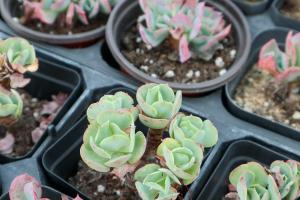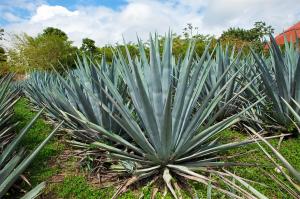How to Make a Rubber Tree Plant Grow
Rubber tree plants are a popular indoor plant due to their lush green leaves and ability to grow in low light conditions. Whether you are a seasoned plant parent or just beginning to develop your green thumb, there are a few steps you can take to ensure that your rubber tree plant grows healthy and strong.
Choose the Right Location
The first step to ensuring a thriving rubber tree plant is to choose the right location. Rubber tree plants need plenty of bright, indirect sunlight, so it is important to choose a spot in your home that receives plenty of light. However, direct sunlight can scorch the leaves of a rubber tree plant, so avoid placing it in a sunny window or under intense artificial lights.
Additionally, rubber tree plants prefer warm and humid conditions, so keep them away from air conditioning vents or drafts. A temperature range of 60-85°F and a humidity level between 50-60% is ideal for rubber tree plants.
Plant Care
Proper plant care is essential for the growth and health of your rubber tree plant. Here are some tips:
Water: Rubber tree plants prefer moist but not overly wet soil. Water thoroughly, then wait for the soil to dry out slightly before watering again. Overwatering can lead to root rot, while allowing the soil to dry out completely can cause the leaves to drop.
Fertilizer: Feed your rubber tree plant during the growing season (spring and summer) with a balanced fertilizer. Be sure to follow the instructions on the label, as over-fertilization can harm the plant.
Pruning: Prune your rubber tree plant to control its growth and shape. You can also remove any damaged or yellowing leaves to promote new growth.
Repotting
If your rubber tree plant starts to outgrow its container, it may be time to repot it. Choose a pot that is one size larger than the current one, and use a well-draining soil mix. Repotting can be stressful for the plant, so wait until the plant is actively growing (spring or summer) and be gentle when handling the roots.
By following these tips, you can keep your rubber tree plant growing strong and healthy for years to come!

 how many times do yo...
how many times do yo... how many planted tre...
how many planted tre... how many pine trees ...
how many pine trees ... how many pecan trees...
how many pecan trees... how many plants comp...
how many plants comp... how many plants can ...
how many plants can ... how many plants and ...
how many plants and ... how many pepper plan...
how many pepper plan...
































